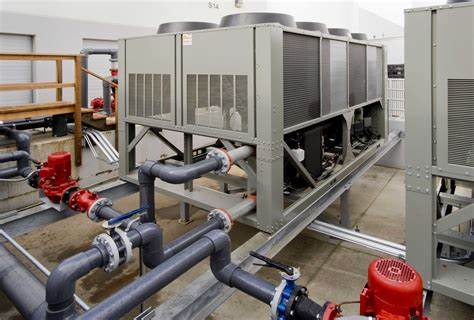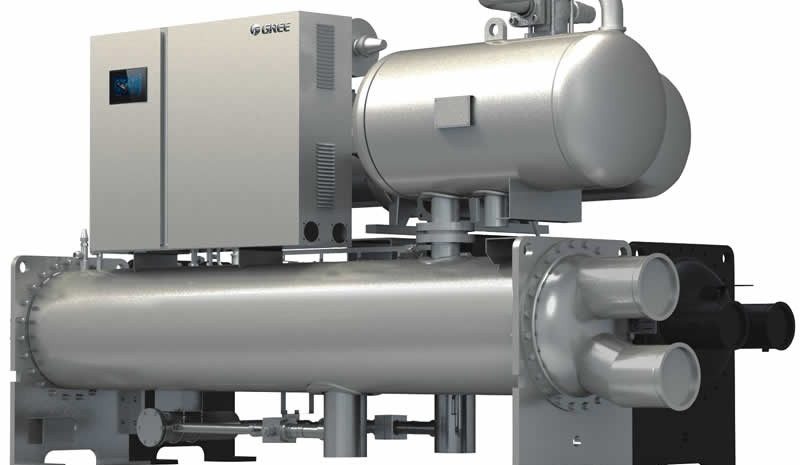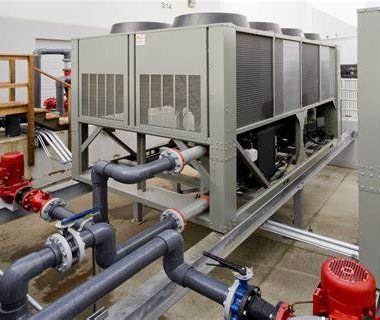Chiller Troubleshooting Guides
Chiller Troubleshooting Guides
Chiller troubleshooting guides are profitable assets for diagnosing and settling common issues that will emerge with chiller systems. Here’s an outline of chiller troubleshooting guides and steps:
1) Identify Symptoms:
- Start by recognizing the indications or problems watched with the chiller system, such as deficiently cooling capacity, irregular noises, temperature vacillations, or error messages on the control panel.
2) Check Operating Conditions:
- Confirm the working conditions of the chiller, counting temperature, pressure, liquid levels, and flow rates. Guarantee that the chiller is getting satisfactory power which all control settings are designed correctly.
3) Review System Logs and Alarms:
- Review system logs, alarm history, and demonstrative codes on the chiller control board or checking computer program to recognize any fault codes, alarms, or caution messages. Utilize these markers to pinpoint potential issues or malfunctions.
4) Inspect External Components:
- Outwardly assess outside components of the chiller system, counting condenser coils, evaporator coils, fans, pumps, valves, and electrical associations. Search for signs of damage, spills, corrosion, or obstacles that will affect system execution.
5) Check Refrigerant Levels and Pressures:
- Degree refrigerant pressures and temperatures at different points within the system utilizing gages or sensors. Compare readings to producer determinations to guarantee proper refrigerant charge and working conditions.
6) Inspect Water Circulation System:
- In case the chiller is water-cooled, check the water circulation system, counting pumps, valves, strainers, and water treatment hardware. Guarantee proper stream rates, weight drops, and water quality to anticipate fouling, scaling, or corrosion.
7) Test Control and Safety Systems:
- Test control systems, sensors, actuators, and security gadgets to verify appropriate operation and responsiveness. Check setpoints, calibration, and interlocks to guarantee that control sequences are working as planning.
8) Perform Diagnostic Tests:
- Conduct diagnostic tests and execution assessments, such as vibration examination, engine current estimations, refrigerant leak discovery, and thermographic inspections, to distinguish covered up or basic issues influencing chiller operation.
9) Refer to Manufacturer Documentation:
- Counsel the chiller manufacturer’s operation manual, maintenance guide, investigating charts, and specialized documentation for particular investigating steps, diagnostic methods, and suggested corrective actions.
10) Seek Professional Assistance:
- If investigating efforts don’t resolve the issue or in the event that there are security concerns, contact qualified HVAC specialists or chiller benefit suppliers for encourage determination and repair. Take after established conventions for shutdown, lockout/tagout, and security precautions when working on chiller systems.
11) Document Findings and Actions Taken:
- Keep detailed records of investigating exercises, discoveries, corrective activities, and repairs performed on the chiller system. Documenting investigating steps makes a difference track maintenance history, recognize repeating issues, and improve future investigating efforts.
By following these investigating rules and efficiently tending to potential issues, facility directors and support personnel can effectively analyze and resolve chiller issues, minimize downtime, and guarantee dependable operation of the chiller system. Normal preventive support and proactive monitoring can too help avoid future issues and optimize chiller performance.





